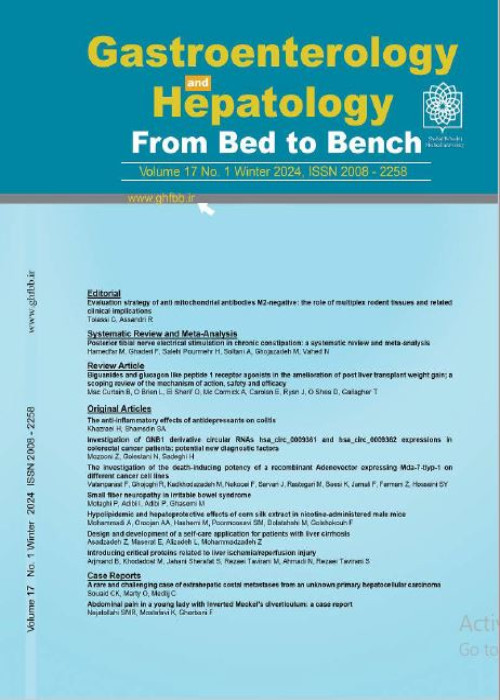Protective effects of crocin and gallic acid on the liver damage induced by methylglyoxal in male mice: role of inflammatory factors
This study aims to evaluatewhether biochemical alterations caused by methylglyoxal (MG), improves by the administration of gallic acid (GA), crocin (Cr), and metformin (MT) in the liver.
MGis produced naturally through various physiological processes, but high levels of MG cause inflammation in hepatocytes. Normal liver function is essential for maintaining glucose homeostasis.Gallic acid and crocincan reduce inflammation.
This experiment was done in 5 weeks. 50 male NMRI mice were randomly divided into 5 groups (n=10): 1) Control, 2) MG (600 mg/Kg/d, p.o.), 3) MG+GA (30 mg/kg/day, p.o.), 4) MG+Cr (60 mg/kg/day, p.o.), 5) MG+MT (150 mg/kg/day, p.o.). After oneweek of habituation, MG was administered for four weeks. Gallic acid, crocin, and metforminwere administeredin the lasttwo weeks. Biochemical and histologic evaluations were assessed after plasma collection and tissue samplepreparation.
Gallic acid and crocin-receivedgroups significantly reduced fasting blood glucose, total cholesterol,triglyceride levels, and elevatedinsulin sensitivity. Administration of MG exerted a marked increase inthe levels of hepatic enzymes.Treatment with gallic acid, crocin, and metformin significantly decreased them.The altered levels of inflammatory factors in the diabetic group were significantly improved in the diabetic-treated groups.High levels of steatosis and red blood cells(RBCs)accumulation in the MG groupmarkedly recovered in other treated mice.
Harmful effects of accumulated MG in the liver of diabetic micewere effectively attenuated by usinggallic acid and crocin
Methylglyoxal , Gallic acid , Crocin , TNF-α , Liver
- حق عضویت دریافتی صرف حمایت از نشریات عضو و نگهداری، تکمیل و توسعه مگیران میشود.
- پرداخت حق اشتراک و دانلود مقالات اجازه بازنشر آن در سایر رسانههای چاپی و دیجیتال را به کاربر نمیدهد.



